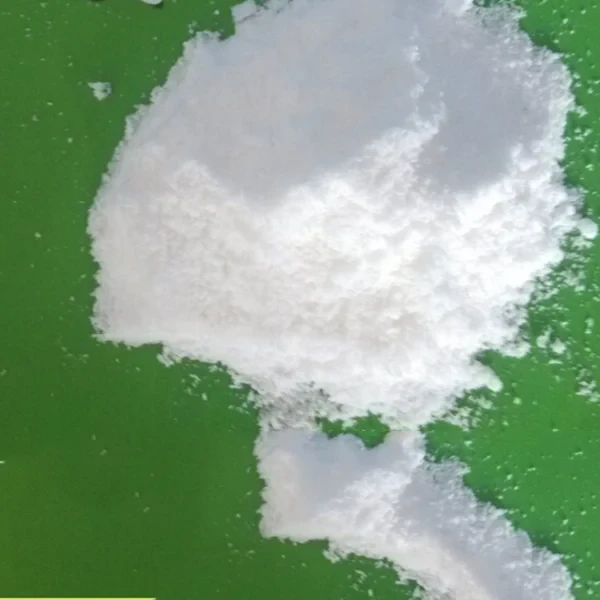
News
Май . 31, 2025 01:46 Back to list
Amino Acid Retarder Supplier High-Efficiency Concrete Additive Manufacturer
Understanding the critical role of specialized concrete additives begins with exploring amino acid retarder
s. These compounds strategically decelerate cement hydration, enabling complex construction projects and extreme-weather pours. This blog examines their core functionality, market suppliers, and practical applications.
- The Science Behind Modern Amino Acid Retarders
- Technical Advantages Over Conventional Solutions
- Supplier Comparison: Key Manufacturers Analyzed
- Tailored Formulation Solutions and Cost Considerations
- Field-Proven Application Case Studies
- Emerging Industry Trends and Innovations
- Selecting an Optimal Amino Acid Retarder Partner

(amino acid retarder)
The Science Behind Modern Amino Acid Retarder Compounds
Amino acid retarders chemically interact with C3A and C3S cement phases to inhibit rapid hydration. By forming temporary molecular bonds with cement particles, these advanced additives achieve controllable setting delays between 12-72 hours depending on dosage and environmental conditions. This precision has made them indispensable for projects requiring extended workability windows.
Leading formulations now incorporate secondary agents that minimize strength loss - field studies demonstrate less than 5% compressive strength reduction at 28 days compared to conventional retarders showing 8-15% reduction. Recent polymer-modified variants further enhance pumpability while reducing typical segregation issues by 25-40%, especially in high-slump applications.
Technical Advantages Over Conventional Solutions
Modern amino acid retarders deliver measurable performance improvements beyond standard lignosulfonate alternatives. Temperature stability represents a key differentiator - specialized formulations maintain consistent set times (±15 minutes) across 4-38°C ambient ranges. Additionally, chloride-free chemistries eliminate corrosion risks that plague outdated calcium chloride-based systems.
Critical technical benefits include:
- Precision setting control (±0.5 hr accuracy across batches)
- 60% reduction in cold joint formation compared to traditional admixtures
- Compatibility with modern SCMs including high-volume fly ash
- No deleterious interactions with plasticizers or air-entraining agents
The molecular adaptability enables slump retention exceeding 4 hours without strength penalty - a characteristic particularly beneficial in ready-mix applications facing transit challenges.
Supplier Comparison: Key Manufacturers Analyzed
| Supplier | Capacity (tons/yr) | Specialization | Global Certification |
|---|---|---|---|
| ChemAdd Corporation | 35,000 | High-range formulations | ISO 9001, EN 934-2 |
| BuildSpec Materials | 18,000 | Customized solutions | ASTM C494, ISO 14001 |
| Global Admixtures Ltd | 62,000 | Standard retarders | ISO 9001, NSF Certified |
| Advanced Concrete Tech | 12,500 | Sustainable formulas | LEED compliant, Cradle to Cradle |
Supply chain analysis reveals regional leaders developing application-specific products. ChemAdd Corporation currently dominates high-temperature formulations critical for Middle Eastern infrastructure projects, while Advanced Concrete Tech leads sustainable amino acid retarder development with 35% bio-sourced content options.
Tailored Formulation Solutions and Cost Considerations
Responsive amino acid retarder manufacturers now implement structured customization protocols:
- Requirement Analysis: Project specifications assessment (set times, environmental conditions, mix design)
- Lab Development: Small-batch testing with performance verification
- Field Validation: Site-specific trial batches monitored by technical teams
Pricing structures vary significantly between standardized and customized orders. Standard formulations range $850-$1,200/ton, while project-specific formulations typically command $1,400-$2,000/ton. Strategic partnerships with qualified amino acid retarder suppliers consistently yield 12-18% total cost savings through logistics optimization and technical support included in service contracts.
Field-Proven Application Case Studies
The Singapore Coastal Highway project demonstrated critical amino acid retarder benefits during continuous 4,500 m3 foundation pours. Selected polycarboxylate-modified formulation delivered:
- Consistent 18-hour set times despite 90% humidity conditions
- Compressive strength variance < 5% across all segments
- Zero construction joints in critical structural elements
Minneapolis' Arctic Tower project validated performance in extreme cold (-12°C pouring temperature). Custom retarder formulation prevented premature setting while enabling proper consolidation - resulting in structural core samples achieving 102% of design strength specifications without thermal damage.
Emerging Industry Trends and Innovations
The amino acid retarder sector is evolving toward multi-functional additives through nanotechnology integration. Early trials with nano-silica modified formulations demonstrate 30% improved early strength development while maintaining retardation benefits. Additionally, bio-enzyme activated systems are emerging that automatically adjust set times based on real-time temperature fluctuations.
Environmental advancements include zero-VOC formulations meeting California's stringent 24 requirements and carbon-negative manufacturing processes that sequester 1.8kg CO2 per kilogram of retarder produced. These innovations address growing market demands, with projections showing 11.2% annual growth through 2028, particularly within sustainable construction sectors.
Selecting an Optimal Amino Acid Retarder Partner
Identifying reliable amino acid retarder manufacturers requires technical evaluation beyond basic certification. Key selection criteria should include documented quality controls for batch consistency, demonstrated expertise with similar project profiles, and responsive technical support capabilities. Pre-qualification testing remains essential - particularly for signature structural applications where performance margins are critical.
When requesting quotes for amino acid retarder solutions, provide comprehensive specifications including mix designs, required setting profile, site conditions, and performance requirements. Leading amino acid retarder suppliers maintain dedicated application laboratories that expedite formulation development, reducing project timelines while ensuring compliant solutions for challenging specifications.

(amino acid retarder)
FAQS on amino acid retarder
Q: What is an amino acid retarder used for?
A: An amino acid retarder is a chemical additive that slows down curing processes in construction materials like concrete, improving workability and reducing cracking risks.
Q: How to choose a reliable amino acid retarder supplier?
A: Look for suppliers with certifications, industry experience, and positive customer reviews. Request product samples and verify compliance with industry standards.
Q: Which manufacturers specialize in high-quality amino acid retarders?
A: Leading manufacturers include global chemical companies like BASF, Sika, and local providers with ISO certification and proven expertise in construction additives.
Q: What factors affect amino acid retarder quotes?
A: Quotes depend on order volume, product purity, shipping costs, and customization requirements. Bulk orders typically receive discounted rates.
Q: Are amino acid retarders environmentally friendly?
A: Many modern amino acid retarders are biodegradable and comply with environmental regulations, but always check manufacturer specifications for eco-certifications.
-
OEM Chelating Agent Preservative Supplier & Manufacturer High-Quality Customized Solutions
NewsJul.08,2025
-
OEM Potassium Chelating Agent Manufacturer - Custom Potassium Oxalate & Citrate Solutions
NewsJul.08,2025
-
OEM Pentasodium DTPA Chelating Agent Supplier & Manufacturer High Purity & Cost-Effective Solutions
NewsJul.08,2025
-
High-Efficiency Chelated Trace Elements Fertilizer Bulk Supplier & Manufacturer Quotes
NewsJul.07,2025
-
High Quality K Formation for a Chelating Agent – Reliable Manufacturer & Supplier
NewsJul.07,2025
-
Best Chelated Iron Supplement for Plants Reliable Chelated Iron Fertilizer Supplier & Price
NewsJul.06,2025
